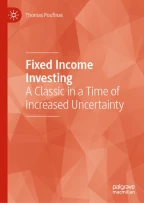Abstract
Already in chapter 1 we gave a prelude of the bond markets and the main functions of the primary and secondary markets. We also identified the interested parties such as the investors, the issuers and the intermediaries. In Chapter 2 we briefly mentioned some of the bond types and their main characteristics. However, we still have to understand which the bond markets are and what the products traded there are. Furthermore, the bond markets have evolved through the years and even though traditional fixed income securities have always attracted interest, there have been other products that have come to the forefront. Fixed income products have increased significantly not only as far as the total outstanding face value or market value is concerned but also in terms of the different types of securities as well as the types of markets. They have therefore attracted the attention of the regulators that attempt to set up a more standardized and rigorous framework for the operation of bond markets, similar to that of the stock markets. In this chapter we look at the fixed income markets, with a fresher look, addressing also contemporary trends. We do not ignore though traditional issues, starting from the money market and going to the bond market. We present the different products that are traded in these markets and explain the way they operate. This chapter exposes the reader to the details of the markets at which bonds are traded.
Access this chapter
Tax calculation will be finalised at checkout
Purchases are for personal use only
References
A-Team. (2020, November 30). Electronification in fixed income—Where is it headed? A-Team Insight. https://a-teaminsight.com/electronification-in-fixed-income-where-is-it-headed/?brand=ati. Accessed: January 2021.
Bodie, Z., Kane, A., & Marcus, A. J. (1996). Investments (3rd ed.). The McGraw Hill Companies, Inc.
Corporate Finance Institute. (2021a). Corporate bonds: Debt issued by corporations. https://corporatefinanceinstitute.com/resources/knowledge/finance/corporate-bonds/. Accessed: January 2021.
Corporate Finance Institute. (2021b). Municipal bond. https://corporatefinanceinstitute.com/resources/knowledge/trading-investing/municipal-bond/. Accessed: January 2021.
Corporate Finance Institute. (2021c). Money Market: Market for lending and borrowing for short-term cash flow needs. https://corporatefinanceinstitute.com/resources/knowledge/trading-investing/what-is-money-market/. Accessed: January 2021.
European Commission. (2020a). Corporate bonds. https://ec.europa.eu/info/business-economy-euro/banking-and-finance/financial-markets/corporate-bonds_en. Accessed: January 2021.
European Commission. (2020b). Covered bonds. https://ec.europa.eu/info/business-economy-euro/banking-and-finance/financial-supervision-and-risk-management/managing-risks-banks-and-financial-institutions/covered-bonds_en. Accessed: January 2021.
ETF Database. (2021). List of bond/fixed income indexes. https://etfdb.com/indexes/bondfixed-income/. Accessed: January 2021.
Geneve Invest. (2021). Investment guidance for making money in the European bond market. https://www.geneveinvest.com/european-bond-market/. Accessed: January 2021.
HIS Markit. (2018). What are bond indices? iBoxx indices. 258506022-CW-0718. https://cdn.ihsmarkit.com/www/pdf/What-Are-Bond-Indices.pdf. Accessed: January 2021.
ICMA. (2017). Market electronification and FinTech. www.icmagroup.org›assets›Market-Infrastructure. Accessed: January 2021.
ICMA. (2020). Bond market size. https://www.icmagroup.org/Regulatory-Policy-and-Market-Practice/Secondary-Markets/bond-market-size/. Accessed: January 2021.
Michele, B. (2020, April 23). Is the bond market dead? JB Morgan asset management. https://am.jpmorgan.com/it/en/asset-management/institutional/insights/portfolio-insights/fixed-income/fixed-income-perspectives/is-the-bond-market-dead/. Accessed: January 2021.
Nasdaq. (2021). Discount securities. https://www.nasdaq.com/glossary/d/discount-securities. Accessed: January 2021.
Parish, A. (2014). Are bonds dead? Positioning your portfolio for today’s markets. Research & Portfolio Strategy. Sage Advisory Services. https://www.etf.com/sites/default/files/3gms_arebondsdead.pdf. Accessed: January 2021.
Prager, R., Pybus, B., Pachatouridi, V., Veiner, D., Laipply, S., & Koay, H. S. (2018). The next generation bond market. BlackRock. https://www.sec.gov/spotlight/fixed-income-advisory-committee/blackrock-next-generation-bond-market-fimsa-011118.pdf. Accessed: January 2021.
R.E.M. (1987). It’s the end of the world. https://www.google.com/search?q=r.e.m.+this+is+the+end+of+the+world&oq=R.E.M.+This+is+the+end+of&aqs=chrome.1.69i57j0i22i30.13215j0j7&sourceid=chrome&ie=UTF-8. Accessed: April 2021.
Securities and Exchange Commission. (2013).What are corporate bonds? Investor Bulletin, SEC Pub. No 149 (6/13). https://www.sec.gov/files/ib_corporatebonds.pdf. Accessed: January 2021.
The Wall Street Journal. (2021, January 28). MarketsTracking bond benchmarks, Thursday. https://www.wsj.com/market-data/bonds/benchmarks. Accessed: January 2021.
Vanguard. (2021). Bond markets. https://investor.vanguard.com/investing/portfolio-management/bond-market. Accessed: January 2021.
Weinberg, C., Cohen, S., Claringbull, A., Cohen, S., Olson, B., Pachatouridi, V., Blackman, N., & Sethi, N. (2020). The modernization of the European bond market. BlackRock. https://www.blackrock.com/dk/formidler/literature/whitepaper/modernisation-of-the-bond-market-en-emea-prof-whitepaper.pdf. Accessed: January, 2021.
World Government Bonds. (2021). Yields curve. http://www.worldgovernmentbonds.com. Accessed: January 2021.
Zipf, R. (1997). How the bond market works (2nd ed.). New York Institute of Finance.
Author information
Authors and Affiliations
Corresponding author
Exercises
Exercises
7.1.1 Exercise 1
-
a.
In what ways are the bond markets different from the equity markets?
-
b.
What is the perceived problematic around the bond markets?
-
c.
What are the efforts that the regulators pursue?
-
d.
How can ITC assist?
-
e.
What issues are difficult to overpass?
7.1.2 Exercise 2
-
a.
Explain the differences between the different money market instruments/markets. Look at the way they operate today.
-
b.
What market/ instruments would be more suitable for a retail investor?
-
c.
What market/ instruments would be more suitable for an institutional investor?
-
d.
What performance/return do they post these days (2021)? Why?
7.1.3 Exercise 3
-
a.
What is the contribution of electronification in the bonds markets?
-
b.
What is the contribution of the existing and upcoming regulation in the bonds markets?
-
c.
What changes/advances are there still to come?
7.1.4 Exercise 4
Compare the yield to maturity of the government bond issues in the Eurozone, the US, the UK and Japan.
-
a.
What do you observe?
-
b.
How are the differences explained?
-
c.
What choices does an investor have to overcome the low or negative yields?
(Hint: you can refer to other chapters as well).
7.1.5 Exercise 5
Repeat exercise 4 for corporate bonds and municipal bondswhere available. You may need to do some research on your own to find the relevant yields.
-
a.
What do you observe for the different countries?
-
b.
How do the corporate bond yields compare with the government bond yields of the same country?
Rights and permissions
Copyright information
© 2022 The Author(s), under exclusive license to Springer Nature Switzerland AG
About this chapter
Cite this chapter
Poufinas, T. (2022). Bond Markets. In: Fixed Income Investing. Palgrave Macmillan, Cham. https://doi.org/10.1007/978-3-030-87922-8_7
Download citation
DOI: https://doi.org/10.1007/978-3-030-87922-8_7
Published:
Publisher Name: Palgrave Macmillan, Cham
Print ISBN: 978-3-030-87921-1
Online ISBN: 978-3-030-87922-8
eBook Packages: Economics and FinanceEconomics and Finance (R0)
